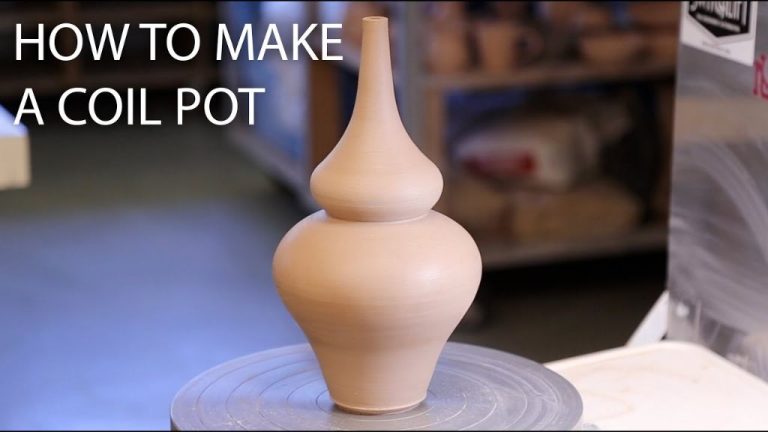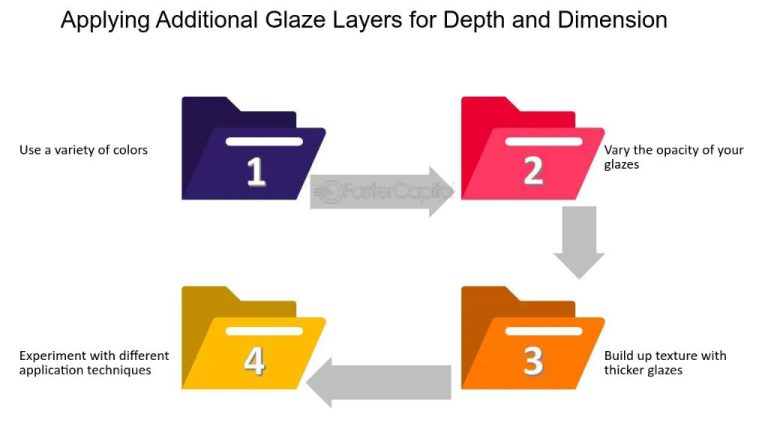Can I Dig My Own Clay For Pottery?
Digging your own clay can be a fun and rewarding experience for pottery hobbyists or professional ceramic artists. Gathering clay directly from the earth allows you to connect more deeply with the material you’ll be shaping into pots, sculptures, tiles, and other artworks. Locating a quality clay deposit takes some persistence and effort, but with the right tools and knowledge, you can find and process high-quality clay at no cost. This provides the satisfaction of creating entirely homemade clay artworks. However, it also comes with certain legal and practical considerations to weigh. This guide covers everything you need to know about sourcing your own pottery clay.
Is It Legal to Dig for Clay?
Before digging for clay, it’s important to know the rules and regulations for the land you plan to dig on. Digging on public land like parks or roadsides is generally not permitted without special permission. National forests and Bureau of Land Management (BLM) land have specific rules about collecting rocks, minerals, or clay from the land.
Private land requires permission from the landowner before digging any material. Some communities may have local laws prohibiting digging without a permit. Homeowners typically have rights to dig shallow pits on their own property, but deeper pits or commercial use may be restricted.
If you’re digging near a creek, river, or body of water, additional regulations apply. Most areas prohibit altering or damming any natural waterway, which could occur during clay digging. Wetland areas often have protections as well.
Before starting any recreational clay digging, research the ownership and permissions required for the land you have in mind. Abide by all local, state, and federal regulations to avoid trespassing violations or damage to the environment.
Where to Find Clay
The best places to look for clay are areas with exposed soil that is known to contain high clay content. Some ideal locations include:
- River banks and beds – Sedimentary clay deposits settle along rivers over time.
- Lakeshores – Like rivers, lake clay deposits can build up along banks.
- Construction sites or road cuts – These disturbed areas reveal subsurface soil layers.
- Beaches – Some beach sand contains clay minerals washed in from rivers.
- Fields – Look for patches ofexposed, sticky mud in plowed fields.
- Hillsides – Erosion can uncover clay subsoil on slopes and bluffs.
The most suitable clay types for pottery include earthenware clays, stoneware clays, and ball clays. These contain the right balance of fine particle size and plasticity. Stay away from clays high in sand, silt, or organic material, as they won’t hold their shape as well.
Talk to local potters or geologists to learn where clay deposits have been found in your region. Be prepared to search and dig test holes until you locate a satisfactory clay source.
Tools Needed
Digging your own clay requires some basic equipment to extract the clay from the ground and prepare it for use. Here are the essential tools you’ll need:
-
Shovel – A rounded point shovel works best for breaking up and scooping clay from the soil.
-
Pickaxe – Useful for breaking up tightly packed soil to reach clay deposits.
-
Buckets – 5 gallon buckets are ideal for collecting and transporting clay.
-
Sieve – A mesh sieve helps remove rocks, roots and debris from your clay.
-
Plastic tarp – Spread a tarp to dry clay scraps before bagging.
-
Stiff brush – Helps remove clinging soil from clay scraps.
-
Large plastic bags – For storing dried clay until you are ready to use it.
Having the right basic digging and extraction tools will make your clay collecting much easier and more efficient.
Digging and Extracting the Clay
Once you have located a good clay deposit, the digging and extraction process begins. Here is a step-by-step guide:
- Use a shovel, spade, or digging tool to break up and loosen the soil where the clay is found. Dig down until you reach the clay layer.
- Carefully extract clay chunks and samples. Remove rocks, roots, and other debris.
- Continue digging and extracting clay until you have enough for your pottery projects. Extract clay from multiple areas within the deposit to get a mix of colors/textures.
- As you dig, keep the extracted clay covered and moist. Dry clay is difficult to work with.
- Fill in any large holes left behind to avoid safety hazards.
- Transport the clay in buckets back to your workspace for testing and preparation.
Pay close attention to the texture, plasticity, and workability of the clay as you dig it. Higher quality pottery clay is smooth, pliable, and free of rocks and roots. Avoid clay that feels gritty or sandy.
Testing and Preparing the Clay
Once you’ve dug up the clay, you’ll want to test it to ensure it’s suitable quality for pottery making. Here are some tips for testing and preparing the clay:
Do a ribbon test – Take a small piece of clay and roll it into a thin snake between your fingers. If the clay can be rolled into a long ribbon without breaking, it likely has good plasticity. Plasticity refers to how stretchy and flexible the clay is.
Check for grit – Rub a piece of clay over your teeth. It shouldn’t feel too gritty or sandy, which means it has minimal impurities.
Perform a drying test – Shape a piece of clay into a ball and allow it to dry completely. If it retains its shape without cracking, that’s a good sign.
Check the firing color – Fire a thumbnail-sized piece of clay by baking it at the highest possible temperature you’ll use. The resulting color will indicate the clay’s fired color.
To prepare the clay:
- Remove any rocks, roots or debris
- Knead it well to mix it thoroughly and achieve an even consistency
- You may want to run it through a sieve to filter out any remaining grit and stones
- Let it dry slightly until it’sworkable but not sticky
Once the clay has been tested and prepared, it’s ready to use for handbuilding or throwing on the potter’s wheel!
Storing the Clay
After your clay is dug and prepared, proper storage is crucial for maintaining its quality and usability. Here are some tips for storing clay:
Keep the clay in a sealed airtight plastic bag or container to prevent it from drying out. Exposure to air will cause clay to harden and become unusable.
Store clay in a cool, dark place. Garages, basements and cupboards work well. Avoid anywhere with extreme temperature fluctuations.
For longer term storage, wrap the clay in plastic and place it inside a cardboard box or plastic bin. This prevents light exposure.
Clay can be frozen for very long term storage. Let it thaw completely before using.
Check regularly for moisture loss. If the clay is drying, knead in some water to restore plasticity.
Clean clay storage containers regularly to prevent mold growth. Don’t introduce new clay to contaminated containers.
Write the clay type and date dug on storage bags or bins for easy identification.
With proper storage methods, homemade clay can last for many months or years, saving trips to dig more until you need it.
Using Dug Clay for Pottery
Once you have extracted, tested, and prepared your homemade clay, you can start using it for pottery projects. Here are some tips for working with clay you dug yourself:
Knead the clay thoroughly before using it. Homemade clay often has small rocks or debris that needs to be worked out. Knead it until the clay is smooth, uniform, and free of lumps.
Let the clay sit wrapped in plastic after kneading. This allows the moisture to distribute evenly through the clay. Wrap it and let it rest for at least 24 hours.
Wedge the clay before throwing. Cut the rested clay into smaller pieces and wedge them by smashing and folding the clay to remove air pockets. This gives the clay an even consistency.
Use slip to help join homemade clay. The minerals and composition of dug clay may make it prone to cracking and weak joins. Apply ceramic slip generously to join pieces.
Avoid very thin-walled pottery. Homemade clay can be fragile in thin sections when dried and fired. Keep walls thicker to prevent cracking and breakage.
Dry pots slowly and evenly. Air dry homemade clay creations slowly under plastic wrap or in a controlled drying box. Fast drying creates flaws.
Test fire small samples first. Fire a few small test pieces to determine the optimal firing temperature and ramp speeds before firing finished pieces.
Sand and refine after firing. Homemade clay may still have small cracks and flaws after firing. Sand and polish pieces to smooth the surface.
Risks and Challenges
Digging your own clay can pose some risks and challenges that are important to consider:
Finding high-quality clay – Not all clay is suitable for pottery. The composition and mineral content can vary greatly, even within the same location. Without proper testing, you may end up digging clay that fires poorly or cracks easily.
Digging on private property – You need permission from landowners before extracting clay on private land. Digging without permission could get you in legal trouble.
Physical hazards – Digging involves hard labor and heavy tools. Hazards like strained muscles, back injuries, cuts, and bruises are possible.
Environmental impact – Removing large amounts of clay can disrupt local ecosystems and landscape. Avoid over-digging to minimize your environmental footprint.
Storage space – Raw clay takes up a lot of space and needs proper storage conditions. Make sure you have adequate indoor space with stable temperature/humidity.
Time investment – From sourcing clay deposits, to digging and processing, it takes significant time and effort to go from raw clay to finished pottery pieces.
Testing and experimenting – Expect a lot of trial and error to find high quality pottery clay and optimize your process. Be prepared to discard subpar results.
Overall, digging your own clay can be rewarding but requires research, planning, hard work, and perseverance through setbacks. Make sure to take proper safety precautions and consider starting small to test quality before large-scale digging.
Conclusion
Digging your own clay can be a rewarding experience for an avid potter or ceramic artist. With some research on locations, proper tools, and extraction techniques, you can obtain high quality clay at a fraction of the cost of buying it. Testing your clay thoroughly and understanding its properties will ensure you can create successful pottery pieces. While novice errors may happen at first, the satisfaction of using your own locally sourced clay is well worth the effort. With care and persistence, you’ll gain valuable skills and have a unique connection to the clay you use for your art.
In summary, extracting your own clay enables creative freedom, cost savings, and a deeper connection with the material. With proper procedures, tools, and testing, the risks are low and the payoff high. While buying prepared clay is easier, the hands-on experience of sourcing it yourself allows for a more personalized artistic process. As long as you dig responsibly and legally, clay dug by hand can become beautiful pots, sculptures, tiles and more.



